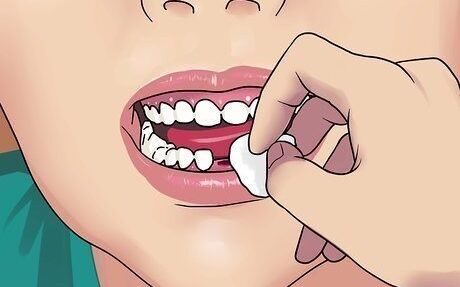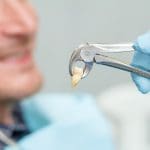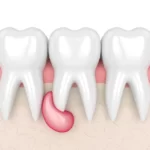Tooth extraction is a common dental procedure performed for various reasons, such as severe decay, gum disease, or impacted wisdom teeth. After the extraction, it is normal to experience bleeding, but excessive or prolonged bleeding after tooth extraction can be a concern. In this comprehensive guide, we will discuss the causes of post-extraction bleeding and effective ways to control it, ensuring a smooth and safe recovery.
Causes of Bleeding After Tooth Extraction
Bleeding after a tooth extraction occurs due to the disruption of blood vessels in the extraction site. This is a natural response as the body tries to form a blood clot to stop the bleeding and initiate the healing process. However, sometimes this clot may dislodge or dissolve, leading to continued or renewed bleeding.
Several factors can contribute to excessive bleeding after a tooth extraction:
- Poor Blood Clot Formation
- Blood Disorders
- High Blood Pressure
- Trauma to the Site
- Medications
- Infection
Poor Blood Clot Formation
Inadequate formation of a blood clot in the extraction socket can lead to prolonged bleeding.
Blood Disorders
Individuals with certain blood disorders or those taking medications that affect blood clotting may experience prolonged bleeding.
High Blood Pressure
Uncontrolled high blood pressure can increase the risk of bleeding after a tooth extraction.
Trauma to the Site
Any trauma or disturbance to the extraction site can dislodge the blood clot and cause bleeding to resume.
Medications
Certain medications, like anticoagulants or antiplatelet drugs, can prolong bleeding.
Infection
Infection at the extraction site can interfere with proper clotting and cause persistent bleeding.
Ways to Control Bleeding After Tooth Extraction
- Maintain Pressure
- Use Ice Packs
- Rest and Avoid Physical Activity
- Avoid Spitting or Rinsing
- Elevate Your Head
- Avoid Certain Foods
- Take Prescribed Medications
- Stabilize Blood Pressure
- Use Tea Bags
- Contact Your Dentist
- Avoid Smoking and Alcohol
- Follow Post-Extraction Instructions
Maintain Pressure
After the tooth extraction, your dentist will place a gauze pad over the extraction site and ask you to bite down to apply pressure. Maintain this pressure for about 30-45 minutes to help form a blood clot and control bleeding.
Use Ice Packs
Applying an ice pack to the cheek over the extraction site can help reduce swelling and may also slow down bleeding by constricting blood vessels.
Rest and Avoid Physical Activity
Rest and avoid any strenuous physical activity for the first 24 hours to minimize the risk of dislodging the blood clot and causing bleeding.
Avoid Spitting or Rinsing
Refrain from spitting, rinsing, or using a straw during the first 24 hours as these actions can dislodge the blood clot and restart bleeding.
Elevate Your Head
Keep your head elevated while lying down to reduce blood flow to the head, which can help control bleeding.
Avoid Certain Foods
Avoid hot, spicy, or hard foods that can irritate the extraction site and potentially trigger bleeding.
Take Prescribed Medications
Take any prescribed medications, such as pain relievers or antibiotics, as directed by your dentist to manage pain and prevent infection, which can also indirectly help in controlling bleeding.
Stabilize Blood Pressure
If you have high blood pressure, ensure that it is under control before undergoing the tooth extraction to minimize the risk of excessive bleeding.
Use Tea Bags
Applying a moistened tea bag (black tea) to the extraction site can help in controlling bleeding due to the tannins present in tea that aid in blood clotting.
Contact Your Dentist
If bleeding persists or worsens after the initial few hours, contact your dentist immediately for further instructions and to rule out any complications.
Avoid Smoking and Alcohol
Stay away from smoking and alcohol consumption during the initial healing period as they can hinder the healing process and increase the risk of bleeding.
Follow Post-Extraction Instructions
Adhere to all post-extraction care instructions provided by your dentist, including follow-up appointments for monitoring and ensuring proper healing.
When to Seek Professional Help
While some bleeding is normal after a tooth extraction, it is crucial to recognize when it becomes excessive or problematic. If you experience any of the following, seek immediate dental care:
- Bleeding Persists
- Blood Clot Dislodges
- Severe Pain or Swelling
- Persistent Fever or Infection Signs
- Excessive Bleeding After 24 Hours
Bleeding Persists
If bleeding continues beyond the initial few hours and is profuse.
Blood Clot Dislodges
If the blood clot becomes dislodged or dissolved, leading to renewed bleeding.
Severe Pain or Swelling
Intense pain or significant swelling that is not alleviated by prescribed medications or ice packs.
Persistent Fever or Infection Signs
If you experience a high fever, foul taste or odor, or signs of infection such as increasing redness, warmth, or discharge from the extraction site.
Excessive Bleeding After 24 Hours
If bleeding persists after 24 hours or is suddenly more intense after the first day.
Proper care and adherence to post-extraction instructions play a crucial role in preventing and managing bleeding after tooth extraction. If you follow the guidelines provided by your dentist and promptly seek professional help if needed, you can ensure a smooth and uneventful recovery from the tooth extraction procedure.
Techniques and Materials Used by Dentists to Control Bleeding After Tooth Extraction
Dentists employ various techniques and materials to effectively control bleeding after a tooth extraction. These methods are designed to aid in the formation of a stable blood clot, minimize bleeding, and promote a smooth healing process. Let’s delve into the specific techniques and materials used:
- Pressure and Gauze Packing
- Surgical Sutures (Stitches)
- Hemostatic Agents
- Bone Wax
- Fibrin Glue
- Topical Thrombin
- Electrocautery
- Laser Hemostasis
- Platelet-Rich Fibrin (PRF)
- Tranexamic Acid Mouthwash
- Hemodent®
- Vasoconstrictor Agents
- Antifibrinolytic Agents
- Intraoral Bandages
- Intraosseous Hemostasis
- Proper Technique and Skill
Pressure and Gauze Packing
Applying pressure on the extraction site using gauze pads is the primary and initial step to control bleeding.
Dentists place a sterile gauze pad over the extraction site and instruct the patient to bite down firmly for about 30-45 minutes. The pressure helps in the formation of a blood clot.
Surgical Sutures (Stitches)
For more complex extractions or when bleeding is persistent, dentists may use surgical sutures to close the wound and support clot formation.
Sutures can aid in stabilizing the blood clot and minimizing the risk of dislodgement.
Hemostatic Agents
Hemostatic agents are substances that promote clotting and help control bleeding.
Gelatin sponges or foam, oxidized cellulose, and collagen-based materials are commonly used to achieve hemostasis.
Bone Wax
Bone wax is a sterile mixture of beeswax and is used to control bleeding from bone surfaces during surgical procedures, including tooth extractions.
It is applied directly to the bleeding area and helps seal the blood vessels.
Fibrin Glue
Fibrin glue is a biological adhesive made from human or animal blood products and is used to promote clot formation.
Dentists may use fibrin glue to help control bleeding and stabilize the extraction site.
Topical Thrombin
Topical thrombin is an enzyme that plays a key role in the blood clotting process.
It is applied topically to the extraction site to accelerate clot formation and control bleeding.
Electrocautery
Electrocautery involves using an electrically heated instrument to burn, cut, or coagulate tissue.
Dentists may use electrocautery to seal blood vessels and control bleeding during and after tooth extractions.
Laser Hemostasis
Dental lasers can be used for hemostasis, helping to control bleeding by sealing blood vessels through cauterization and promoting clot formation.
Platelet-Rich Fibrin (PRF)
PRF is a preparation derived from the patient’s own blood that is rich in platelets and growth factors.
Dentists may use PRF to accelerate healing and aid in the formation of a stable blood clot at the extraction site.
Tranexamic Acid Mouthwash
Tranexamic acid is an antifibrinolytic agent that can be used as a mouthwash to reduce bleeding following tooth extractions.
It helps to stabilize the clot by inhibiting the breakdown of fibrin.
Hemodent®
Hemodent® is a popular hemostatic agent that contains ferric sulfate.
Dentists may use Hemodent® to control bleeding by forming a stable clot at the extraction site.
Vasoconstrictor Agents
Topical agents containing vasoconstrictors like epinephrine can be used to constrict blood vessels, reducing bleeding at the extraction site.
Antifibrinolytic Agents
Medications like aminocaproic acid can be prescribed to patients to inhibit the breakdown of blood clots and control bleeding.
Intraoral Bandages
In some cases, dentists may use intraoral bandages or dressings to cover the extraction site and provide additional pressure to control bleeding.
Intraosseous Hemostasis
In complex cases, dentists may use intraosseous hemostasis techniques involving bone wax or other materials placed within the bone to control bleeding.
Proper Technique and Skill
Skillful and precise surgical technique by the dentist is essential to minimize trauma to blood vessels and reduce the risk of excessive bleeding during the extraction.
It’s important to note that the choice of technique and material used to control bleeding may vary based on the patient’s individual condition, the complexity of the extraction, and the dentist’s professional judgment. Dentists carefully assess each patient and tailor the approach accordingly to ensure safe and successful post-extraction care. Always follow your dentist’s recommendations for optimal healing and recovery.





